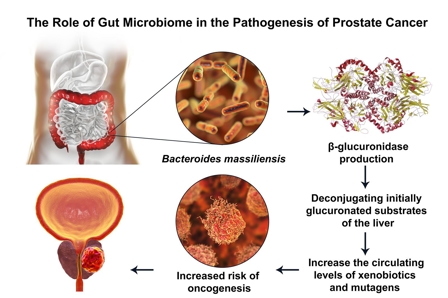In this current climate of isolationist sentiment, both political and medical, it is difficult to conceive of the concept of friendly cooperation among all our parts. And yet we have always known that the hand, if not attached to the rest of the body, is useless to us.
One of Madeleine L’Engle’s most popular books, A Wind in the Door[1], is based on the proposition that every part of our body needs to mature and take its rightful place in the body, if we are to maintain our health and indeed our very lives. If our juvenile mitochondria refuse to mature and produce energy, then the rest of the body simply withers away due to lack of energy – thus killing the rebellious mitochondria at the same time.
St. Paul is quoted in his first letter to the Corinthians: “There is one body, but it has many parts. But all its many parts make up one body… Suppose the foot says, ‘“I am not a hand. So I don’t belong to the body.” By saying this, it cannot stop being part of the body… And suppose the ear says, “I am not an eye. So I don’t belong to the body.’ By saying this, it cannot stop being part of the body… If the whole body were an eye, how could it hear? If the whole body were an ear, how could it smell? If one part suffers, every part suffers with it. If one part is honored, every part shares in its joy.”[i]
 An interesting paper published in the journal Industrial Biotechnology in 2018 talks about “engineering” of microbial consortia (populations) in the dairy industry, to produce usable methane gas from composed cow manure. The author laments that “by focusing on pure culture development, we have missed the opportunity to exploit the ability of microbial consortia to carry out much more complex metabolic activities, to adapt more readily to environmental perturbations, and act synergistically in carrying out eco-services.”[ii]
An interesting paper published in the journal Industrial Biotechnology in 2018 talks about “engineering” of microbial consortia (populations) in the dairy industry, to produce usable methane gas from composed cow manure. The author laments that “by focusing on pure culture development, we have missed the opportunity to exploit the ability of microbial consortia to carry out much more complex metabolic activities, to adapt more readily to environmental perturbations, and act synergistically in carrying out eco-services.”[ii]
Can, and does, our microbiome, influence our food choices? Can we influence our microbiome through our food choices? This appears to be a two-way street.
An interesting rat experiment shows that the addition of FOS – fructo-oligosaccharides – can reverse the desire for “palatable” foods in rats, without actually reversing the resultant body mass. “Palatable” in the food industry means foods that we come to crave, with high fat high sugar (like our human snack foods and fast foods – Ritz crackers, McDonald’s hamburgers and sugar-coated French fries).
“Palatable” food induces dopamine expression in the rat’s brain (and presumably also in human brains) after a period of conditioning – i.e. eating these palatable foods for two months (in the rat, that would be equivalent to exposure throughout childhood in humans).
Does our microbiome influence our metabolism of nutrients and even our weight?
The metabolic syndrome – a symptom complex of obesity, insulin resistance, weight gain and sugar metabolism abnormalities – is pandemic in our modern society, where we eat almost exclusively “energy dense” foods and expend very little energy through exercise.
As one researcher so eloquently writes: “The metabolic syndrome is in essence a multifactorial disease that encloses a complex network of molecular, cellular, and physiologic alterations. Proper energy balance is insured by the ability of the central nervous system to integrate nervous and circulating signals that reflect nutritional status to produce adaptive metabolic and behavioral responses aiming at maintaining body weight within a physiological narrow range.” [iii]
Recent theories – at least theories, if perhaps not evidence – suggest that energy dense foods are capable of recoding the limbic reward system, short-circuiting the homeostatic mechanisms of motivation to eat and sensation of reward for having eating – i.e. hunger and satiety – by impacting the dopamine reward circuit in much the same way as cocaine or heroin induce craving and addictive behavior. In this way, food itself becomes the “reward”, and our energies focus on attaining that “reward” to maintain the pleasurable feelings induced.
Another researcher states: “it is clear that the gut microbiota can be a key regulator of mood, cognition, pain, and obesity. Understanding microbiota-brain interactions is an exciting area of research which may contribute new insights into individual variations in cognition, personality, mood, sleep, and eating behavior, and how they contribute to a range of neuropsychiatric diseases ranging from affective disorders to autism and schizophrenia. Finally, the concept of psychobiotics, bacterial-based interventions with mental health benefit, is also emerging.”[iv]
So in the final analysis, who is in charge here in our bodies? Who makes the choices of what to eat, how much to exercise, what kinds of stress to tolerate, what things to embrace, what to eschew? Do we have any control over the vast hordes of bacteria that reside in our bodies? Are we a partnership? Or are we at war? And whose decision is it to cooperate or to fight?
Health is a manifestation of agreement between our bodies, our minds, our spirits – and it appears that we must also include our microbial population, our microbiome, without whom we cannot live.
[i] 1st Corinthians ch 12
[ii] Walker L. The Whole Is More Than the Sum of the Parts: Exploiting Microbial Consortia. Industrial Biotechnology Vol. 14, No. 3
[iii] Delbès, Anne-Sophie, et al. "Prebiotics supplementation impact on the reinforcing and motivational aspect of feeding." Frontiers in endocrinology 9 (2018).
[iv] Burokas, Aurelijus, et al. "Microbiota regulation of the mammalian gut–brain axis." Advances in applied microbiology. Vol. 91. Academic Press, 2015. 1-62. Chapter 1 of the book.

